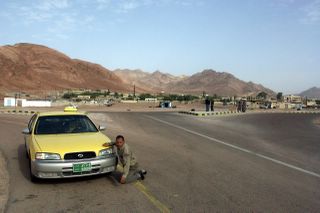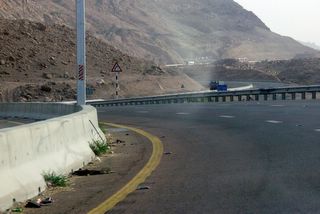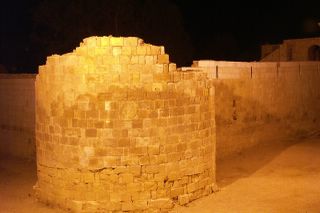The taxi driver kept promoting his tour guide, and he even took out his mobile phone (yes, mobile phone on desert highway, Jordan is not undeveloped after all) to call the tour guide to discuss about the price (and may be, who knows, since he was talking in Arab language, asked for his rewards).
I had actually made a booking with Attayak Ali which recommended by Ruth's Jordan Jubilee. We opted for "A Day with the Bedouin" with overnight in desert, and visits in 4x4. It would costed us 25 JD per person if 3 person in a group or less, or 20 JD is more than 3 person. (Price has since increase - 40 JD per person for up to 2 person, 35 JD for 3 and 30 JD per person for 4 person and above).
So when the taxi driver told us the price is about 20 JD for about the same itinerary in Wadi Rum, I was still thinking it's a steal. So we ended up agreed to join the tour instead of the originally we booked. It turned out to be one of the worst we made during our whole trip in Egypt and Jordan.

The famous Rum Intersection that leads to Wadi Rum from Desert Highway at Rashdiya, with our taxi driver and his taxi.
As expected, our taxi driver dropped us at the intersection to Rum Village from Desert Highways instead of Rum Village itself. At this point, I don't think we had much choice except to join the tour guide that our taxi driver contacted. To add salt to the grain, the tour guide kept chasing us to board the pick-up without much desire to negotiate with us.
We were later taken directly to the tour guide, Mohammed's house without going through Wadi Rum's Visitors Center. But according to Lonely Planet Jordan guide book, you will be able to arrange a guide at the visitors centre based on the next available guide on the roster there.










